George W. Huber | |
|---|---|
| Born | 1974 (age 49–50) La Jolla, California, U.S. |
| Alma mater | University of Wisconsin Brigham Young University |
| Known for | Reaction Engineering, Process Engineering |
| Awards | Camille Dreyfus Teacher Scholar (2011) |
| Scientific career | |
| Fields | Chemical Engineering |
| Institutions | University of Massachusetts University of Wisconsin |
| Doctoral advisor | James Dumesic |
George W. Huber is an American chemical engineer. He is the Richard L. Antoine Professor of Chemical Engineering at the University of Wisconsin- Madison. His research focus is on developing new catalytic processes for the production of renewable liquid fuels and chemicals.
In 2015 Thomson Reuters has listed George as a “highly cited researcher” which indicates that he is “one of the “world’s most influential scientific minds” who rank in the top 1% most cited. He has authored over 100 peer-reviewed publications including three publications in Science and has over 10 patents. He has received several awards including the NSF CAREER award, the Dreyfus Teacher-Scholar award, fellow of the Royal Society of Chemistry, and the outstanding young faculty award (2010) by the college of engineering at UMass-Amherst. He has been named one of the top 100 people in bioenergy by Biofuels Digest for the past 4 years. He is co-founder of Anellotech (www.anellotech.com) a biochemical company focused on commercializing, catalytic fast pyrolysis, a technology to produce renewable aromatics from biomass. George serves on the editorial board of Energy and Environmental Science, ChemCatChem, Energy Technology, and The Catalyst Review. In June 2007, he chaired a NSF and DOE funded workshop entitled: Breaking the Chemical and Engineering Barriers to Lignocellulosic Biofuels (www.ecs.umass.edu/biofuels). In summer of 2015, George did a sabbatical visit with Professor Tao Zhang at Dalian Institute of Chemical Physics. George did a post-doctoral stay with Avelino Corma at the Technical Chemical Institute at the Polytechnical University of Valencia, Spain (UPV-CSIC). He obtained his Ph.D. in chemical engineering from University of Wisconsin-Madison (2005). He obtained his B.S. (1999) and M.S.(2000) degrees in chemical engineering from Brigham Young University. Huber is a Latter-day Saint. The July 2009 issue of Scientific American included an article on the potential of grassoline by Huber and Bruce E. Dale.

Biomass to liquid is a multi-step process of producing synthetic hydrocarbon fuels made from biomass via a thermochemical route.
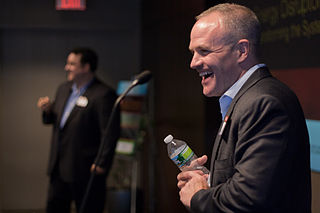
Jay D. Keasling is a professor of chemical engineering and bioengineering at the University of California, Berkeley. He is also associate laboratory director for biosciences at the Lawrence Berkeley National Laboratory and chief executive officer of the Joint BioEnergy Institute. He is considered one of the foremost authorities in synthetic biology, especially in the field of metabolic engineering.

Lignocellulose refers to plant dry matter (biomass), so called lignocellulosic biomass. It is the most abundantly available raw material on the Earth for the production of biofuels. It is composed of two kinds of carbohydrate polymers, cellulose and hemicellulose, and an aromatic-rich polymer called lignin. Any biomass rich in cellulose, hemicelluloses, and lignin are commonly referred to as lignocellulosic biomass. Each component has a distinct chemical behavior. Being a composite of three very different components makes the processing of lignocellulose challenging. The evolved resistance to degradation or even separation is referred to as recalcitrance. Overcoming this recalcitrance to produce useful, high value products requires a combination of heat, chemicals, enzymes, and microorganisms. These carbohydrate-containing polymers contain different sugar monomers and they are covalently bound to lignin.
Biogasoline is a type of gasoline produced from biomass such as algae. Like traditionally produced gasoline, it is made up of hydrocarbons with 6 (hexane) to 12 (dodecane) carbon atoms per molecule and can be used in internal combustion engines. However, unlike traditional gasoline/petroleum based fuels, which are mainly composed from oil, biogasolines are made from plants such as beets and sugarcane or cellulosic biomass- substances normally referred to as plant waste.
Reactive flash volatilization (RFV) is a chemical process that rapidly converts nonvolatile solids and liquids to volatile compounds by thermal decomposition for integration with catalytic chemistries.

Lanny D. Schmidt was an American chemist, inventor, author, and Regents Professor of Chemical Engineering and Materials Science at the University of Minnesota. He is well known for his extensive work in surface science, detailed chemistry (microkinetics), chemical reaction engineering, catalysis, and renewable energy. He is also well known for mentoring over a hundred graduate students and his work on millisecond reactors and reactive flash volatilization.
Bruce E. Dale is a professor of chemical engineering at Michigan State University. He specializes in studies of renewable energy sources, and is currently working on creating methods of turning grass into ethanol for use as fuel.
Bioproducts or bio-based products are materials, chemicals and energy derived from renewable biological material.
The Eni Award is a prize awarded by the Italian oil and gas company Eni with the aim of encouraging better use of energy sources and increased environmental research. The strict award guidelines and the notable names on the selection committee make Eni a coveted award. List of Eni award winners include Nobel laureates like Harold W. Kroto and Alan Heeger.
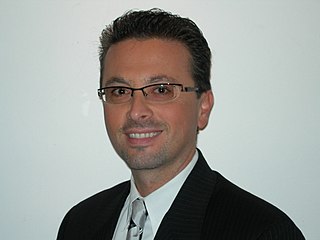
Dr. George Philippidis is a renewable energy and sustainability leader, who has published and spoken extensively about the global need for renewable energy as the foundation of a green economy and a sustainable society. He advocates the development of renewable power and fuels to enhance energy security, combat climate change, and secure sustainable economic growth. He has authored 11 cleantech patents, written numerous articles, and spoken nationally and internationally emphasizing that renewable energy can initially supplement and augment current resources and progressively replace fossil energy based on its own merits rather than on government policy.
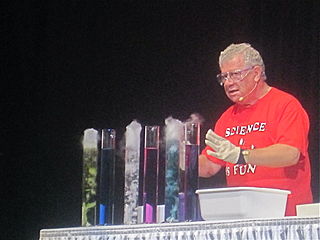
Bassam Z. Shakhashiri is a professor of chemistry at the University of Wisconsin-Madison, where he is the holder of the William T. Evjue Distinguished Chair. An active advocate for science education, he is the author of multiple books of chemical demonstrations. He was the 2012 president of the American Chemical Society and has received numerous awards and honors.

James C. Liao is the Parsons Foundation Professor and Chair of the Department of Chemical and Biomolecular Engineering at the University of California, Los Angeles and is the co-founder and lead scientific advisor of Easel Biotechnologies, LLC.
Laxmangudi Krishnamurthy Doraiswamy (1927–2012) was an Indian-American chemical engineer, author and academic, known for his contributions in developing Organic synthesis engineering as a modern science discipline. Chemical Engineering journal of McGraw Hill listed him among the 10 most distinguished chemical engineers in the world in 1988. He was the author of nine texts in chemical engineering, including Organic Synthesis Engineering, a 2001 publication which is known to have introduced the topic as a definitive scientific stream and Heterogeneous reactions: Analysis, Examples, and Reactor Design, reportedly the first comprehensive text in chemical engineering.
Charles E. Wyman, is a Ford Motor Company Chair and a Distinguished Professor & Endowed Chair in Chemical & Environmental Engineering at University of California, Riverside. Wyman was also the Paul E. and Joan H. Queneau Distinguished Professor in Environmental Engineering Design at the Thayer School of Engineering at Dartmouth College, Prior to joining UC Riverside. He is the co-founder and former Chief Development Officer and Chair of the Scientific Advisory Board of Mascoma Corporation. He is one of the researchers responsible for the development of the Bioenergy, Biomass & Biofuel. He is an authoritative figure in the broad area of ethanol. He has made significant seminal contributions in the specific areas of pretreatment, enzymatic hydrolysis, and dehydration of cellulosic biomass to reactive intermediates for biological or catalytic conversion into fuels and chemicals. Wyman has over 200 journal papers, 25 books chapters, and has given numerous national and international talks, 30 technical reports and about more than 20 patents.

Moti Herskowitz is a professor of Chemical Engineering, the incumbent of the Israel Cohen Chair in Chemical Engineering and researcher in the fields of advanced materials, catalysis and multiphase reactors. He is the founder (1995) and director of the Blechner Center for Industrial Catalysis and Process Development.
T. Alan Hatton is the Ralph Landau Professor and the Director of the David H. Koch School of Chemical Engineering Practice at Massachusetts Institute of Technology. As part of the MIT Energy Initiative, he co-directs the Center for Carbon Capture, Utilization and Storage. His work focuses on the development of purification technologies of various kinds for use with air, water, and other substances.
Dionisios G. Vlachos is an American chemical engineer, the Allan & Myra Ferguson Endowed Chair Professor of Chemical Engineering at the University of Delaware and director of the Catalysis Center for Energy Innovation, a U.S. Department of Energy - Energy Frontiers Research Center. Throughout his career at University of Delaware and the University of Minnesota, he has advanced the study of catalysts and reaction engineering including catalytic applications in biomass utilization, alkane conversion and zeolites. He is a fellow of the American Association for the Advancement of Science and recipient of the Wilhelm Award of the American Institute of Chemical Engineers (2011).
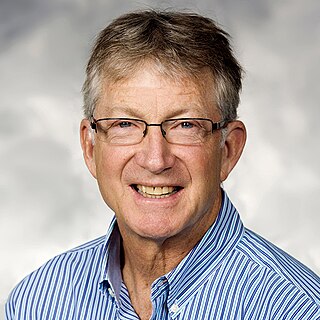
James L. Skinner is an American theoretical chemist. He is the Joseph O. and Elizabeth S. Hirschfelder Professor Emeritus at the University Wisconsin-Madison. He is also a member of the Scientific Advisory Board of the Welch Foundation. Most recently, Skinner was the Crown Family Professor of Molecular Engineering, professor of chemistry, director of the Water Research Initiative and deputy dean for faculty affairs of the Pritzker School of Molecular Engineering at the University of Chicago. Skinner is recognized for his contributions to the fields of theoretical chemistry, nonequilibrium statistical mechanics, linear and nonlinear spectroscopy of liquids, amorphous and crystalline solids, surfaces, proteins, and supercritical fluids. Skinner is the co-author of over 230 peer-reviewed research articles.
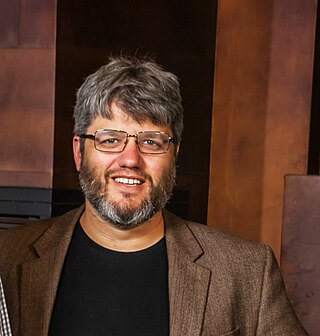
Paul Dauenhauer, a chemical engineer and MacArthur Fellow, is the Lanny & Charlotte Schmidt Professor at the University of Minnesota (UMN). He is recognized for his research in catalysis science and engineering, especially, his contributions to the understanding of the catalytic breakdown of cellulose to renewable chemicals, the invention of oleo-furan surfactants, and the development of catalytic resonance theory and programmable catalysts.

Sudhhasatwa Basu is an Indian chemical engineer. He is director of Council of Scientific Industrial Research - Institute of Minerals and Materials Technology (CSIR-IMMT) in Bhubaneswar, India, and is Professor of Chemical Engineering, Indian Institute of Technology (IIT) Delhi, Adjunct Professor, Institute of Chemical Technology, Mumbai and Professor of AcSIR. His research interests include electrokinetic and electrochemical phenomena in fuel cells.